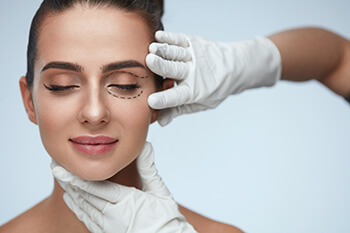Restoring Vision With Oculofacial Plastic & Reconstructive Surgery

What is “oculoplastic” surgery? Is it plastic surgery? Yes, and it can be either cosmetic or reconstructive. General plastic surgeons are trained to perform a variety of procedures across the body. Oculoplastic surgeons are ophthalmologists first. They specialize in treating everything in and around the eyes.
Is your vision compromised? Explore reconstructive options with a Sabates consultation.
While cosmetic procedures are performed solely to improve appearance, reconstructive surgery is medically necessary to restore impaired visual function and is usually covered by health insurance. At Sabates Eye Centers, patients of all ages undergo oculoplastic surgery to treat abnormalities of the eyelids and face, the lacrimal (tear duct) system and the orbit. Two of the most common conditions requiring surgery are eyelid malposition and thyroid eye disease.
Schedule a screening with an oculoplastic surgeon today.





